InGeo Air-Purifying Tower
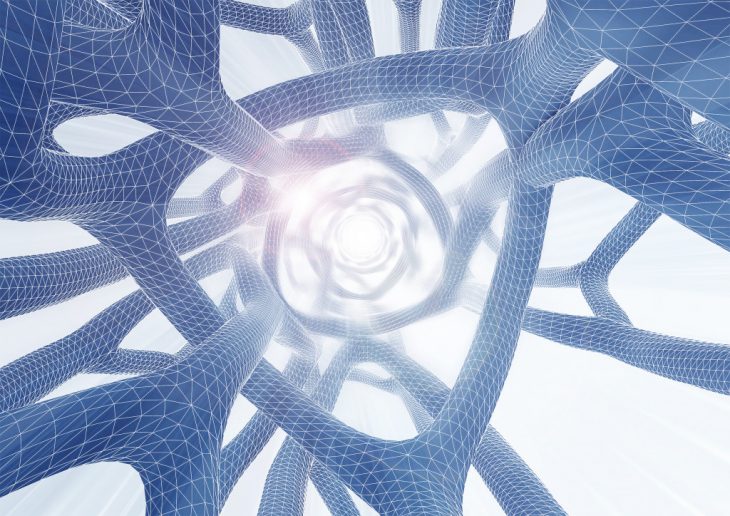
Ingeo Tower design is a part of research project for Digital Matter Studio, called “InGeo” – optimized geometry for CO2 absorption, and concentrates on architectural application of our material and geometry.
PROPOSAL
The architectural part of the project includes erection of a large-scale structure to purify air of Carbon dioxide in most contaminated areas of large cities. The structure of InGeo Tower consists of several “chimneys”, covered with CO2-absorbing InGeo modules, that get saturated with air due to chimney effect. The chimneys are installed on top of ferroconcrete exoskeleton, giving entire structure enough strength and rigidity.
As follows, the most important parameters for optimization were:
-
- Maximal height and diameter of chimneys.
- Maximal surface area of chimneys, for more efficient CO2 absorption.
- Minimal weight and size of outer exoskeleton to save material and energy.
It was also quite important to bear in mind, that area in cities is extremely expensive, thus the footprint of the tower should be limited to certain extent.
Despite so many sometimes controversial parameters, almost all of them equally important, it was not possible to take them into account at once. Therefore it was decided to split optimization part into 3 major steps:
-
- Maximization of chimneys’ area and preventing collision.
- Further maximization of surface area via tassellation of chimneys’ internal surface.
- Minimization of exoskeleton thickness and volume.
INGEO TOWER OPTIMIZATION STRATEGY:
PHASE 1 :
- Create a polygon, defining the borders of the site.
- Populate the polygon with points, defining number of “chimneys”.
- Create series of points along Z-axis.
- Move points to bundle “chimneys” with each other.
- Create a circle in every point; remap numbers according to distance from center.
- Scale circles, decreasing them towards the top.
- Change number of levels in different “chimneys” for diversity and silhouette.
- Create lofts from sequences of circles.
- Make solids from lofts.
- Set a pealty to prevent collision of chimneys during optimization.
- Run the Galapagos solver, record iterations.
PHASE 2 :
- Rebuild circles for tessellation.
- Set variable parameters for tessellation.
- Run the Galapagos solver, record iterations.
PHASE 3 :
- Turn open lofts into hexagonal mesh.
- Cull unneeded lines of the mesh.
- Add lines where needed. (parametrically)
- Sort points of the network according to their height.
- Position spheres in all the points, remap radii according to points’ height.
- Use Mesh fattener plug-in to turn network into thick mesh.
- Use Weaverbird plug-in to smoothen mesh and turn it into a more organic shape.
- Calculate mesh volume.
- Run Galapagos solver to minimize mesh volume and material expenses, record iterations.
CATALOGUE OF INGEO TOWER ITERATIONS:
STEP 1: CHIMNEYS OPTIMIZATION
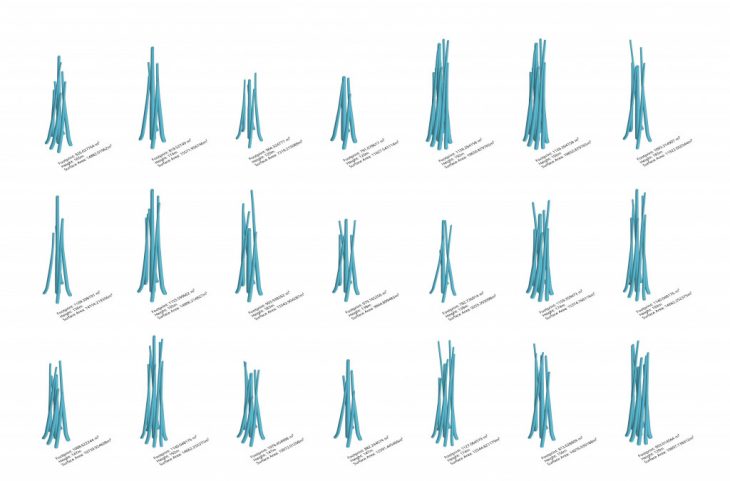
STEP 2: TESSELLATION
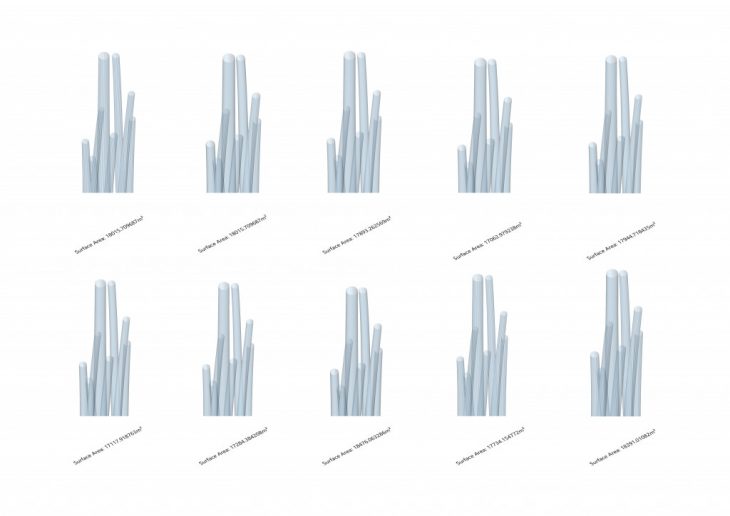
STEP 3: EXOSKELETON OPTIMIZATION
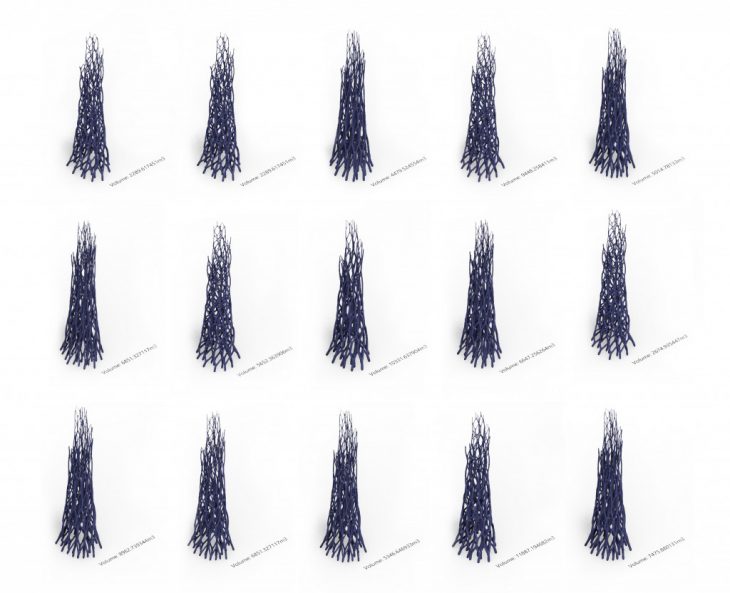
OPTIMIZED CONFIGURATION:
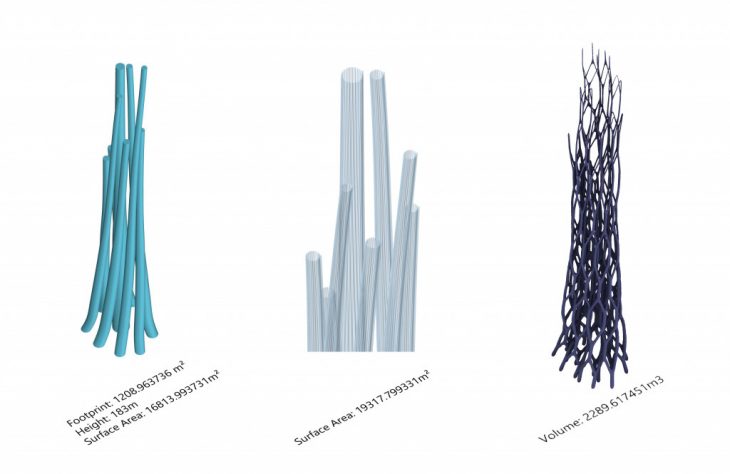
RESULTING ARCHITECTURAL PROPOSAL:
The InGeo Tower is supposed to be installed in most contaminated urban zones of large cities. The chimney effect increases the speed and efficiency of air puryfication and cools the surrounding environment. At the same time, colour indication of InGeo modules attracts peoples’ attention to ecological issues and allows to extract data about air quality.
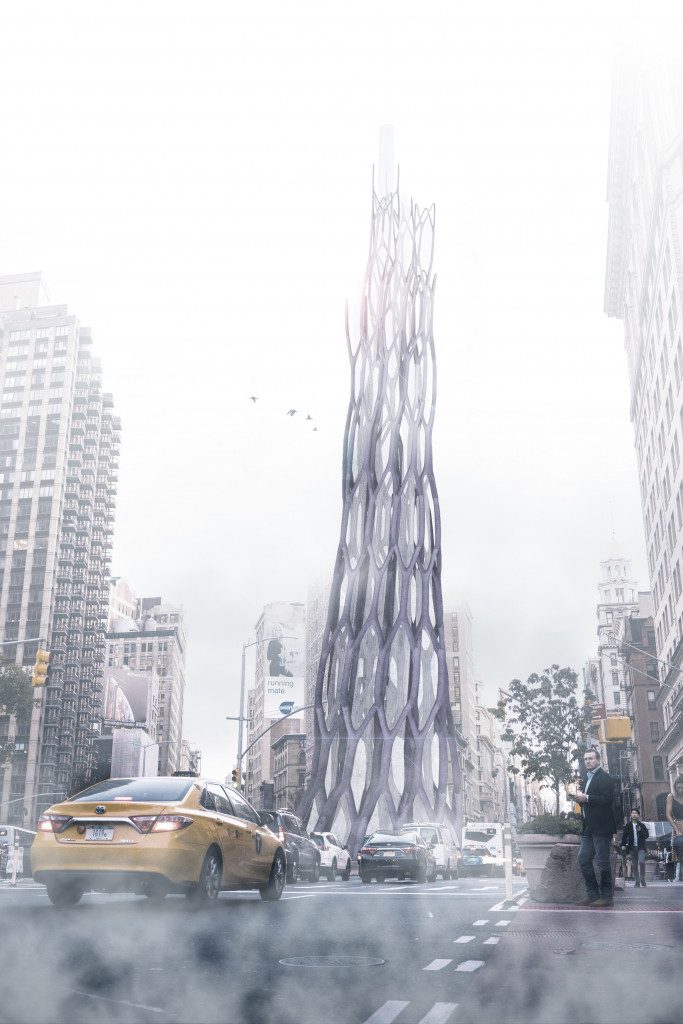
- – photo credits – Robin Benzrihem
Student: Ivan Marchuk
Tutor: Rodrigo Aguirre
Tutor assistants: Daniil Koshelyuk, Nikoleta Mougkasi